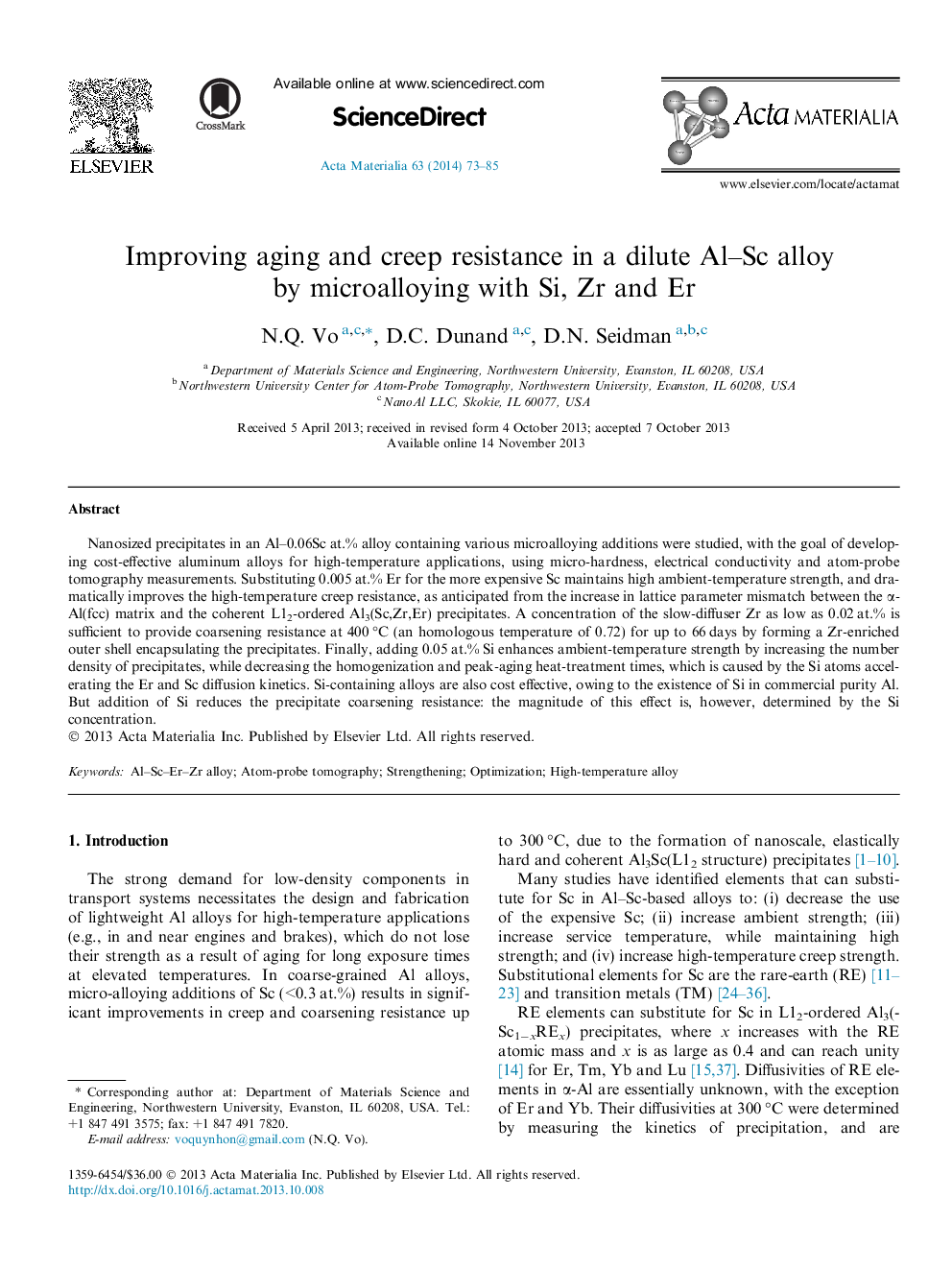| Article ID | Journal | Published Year | Pages | File Type |
|---|---|---|---|---|
| 1445894 | Acta Materialia | 2014 | 13 Pages |
Nanosized precipitates in an Al–0.06Sc at.% alloy containing various microalloying additions were studied, with the goal of developing cost-effective aluminum alloys for high-temperature applications, using micro-hardness, electrical conductivity and atom-probe tomography measurements. Substituting 0.005 at.% Er for the more expensive Sc maintains high ambient-temperature strength, and dramatically improves the high-temperature creep resistance, as anticipated from the increase in lattice parameter mismatch between the α-Al(fcc) matrix and the coherent L12-ordered Al3(Sc,Zr,Er) precipitates. A concentration of the slow-diffuser Zr as low as 0.02 at.% is sufficient to provide coarsening resistance at 400 °C (an homologous temperature of 0.72) for up to 66 days by forming a Zr-enriched outer shell encapsulating the precipitates. Finally, adding 0.05 at.% Si enhances ambient-temperature strength by increasing the number density of precipitates, while decreasing the homogenization and peak-aging heat-treatment times, which is caused by the Si atoms accelerating the Er and Sc diffusion kinetics. Si-containing alloys are also cost effective, owing to the existence of Si in commercial purity Al. But addition of Si reduces the precipitate coarsening resistance: the magnitude of this effect is, however, determined by the Si concentration.
